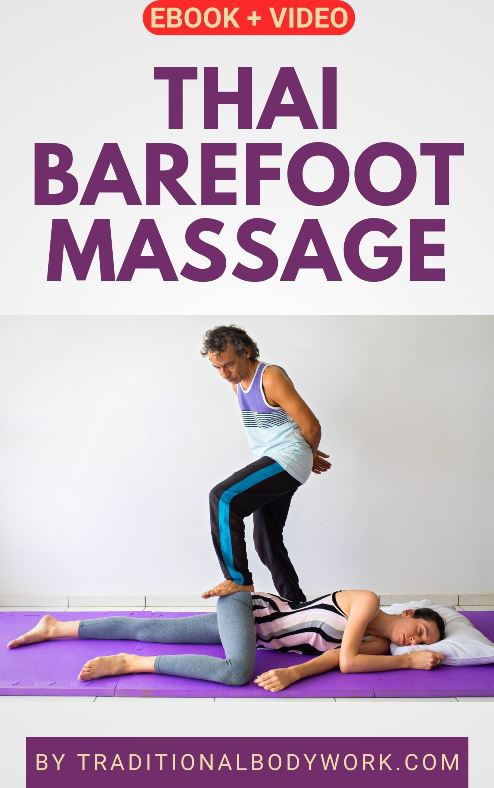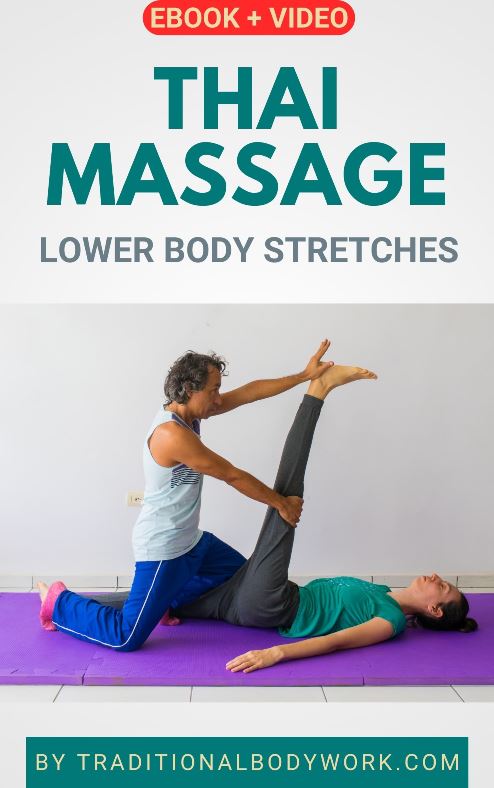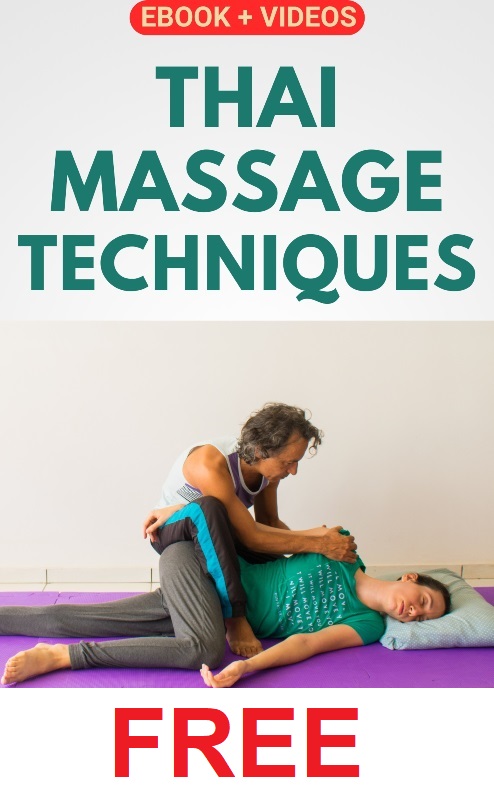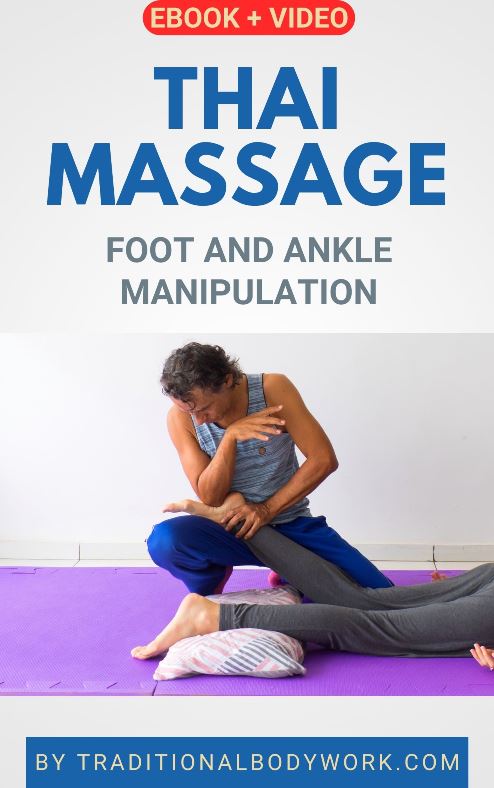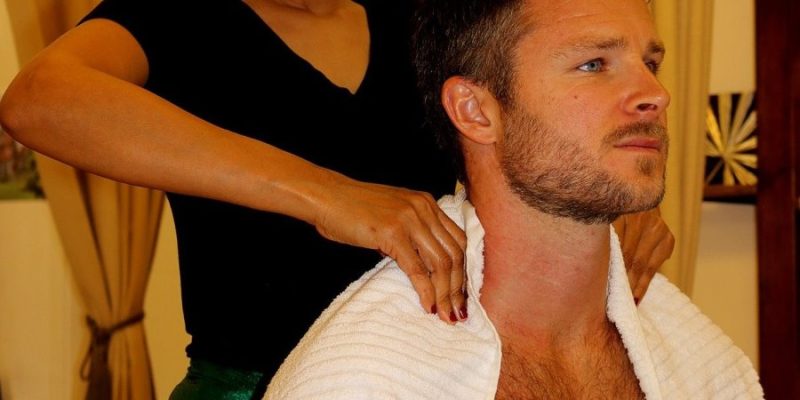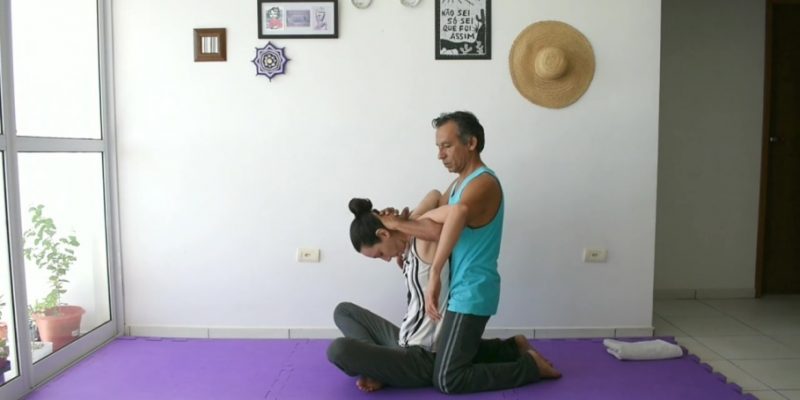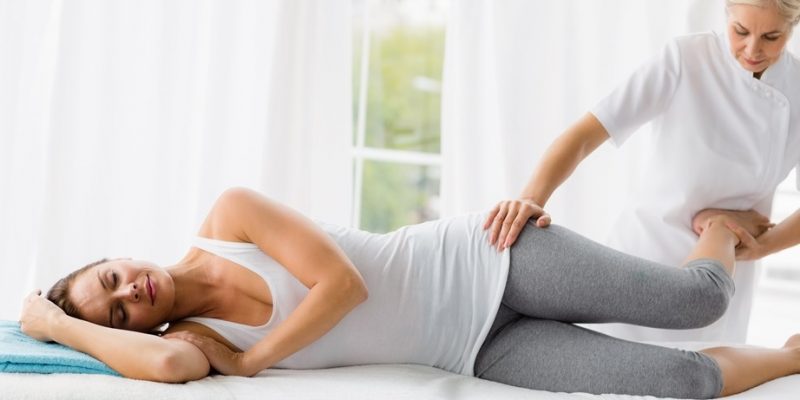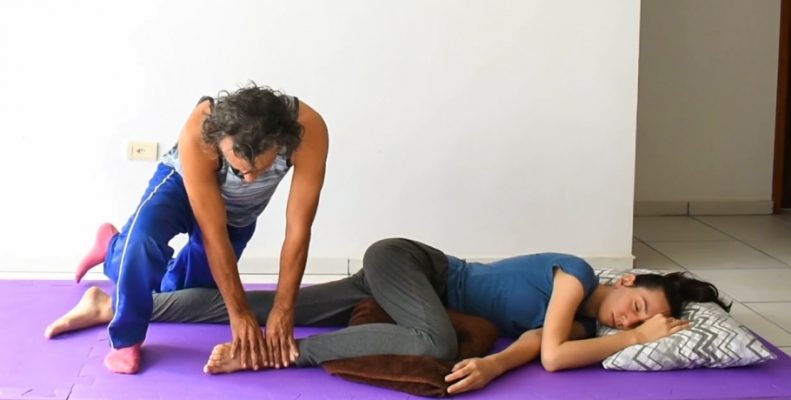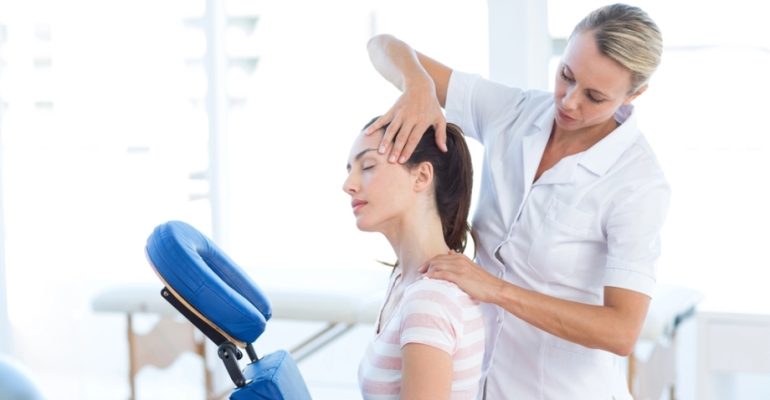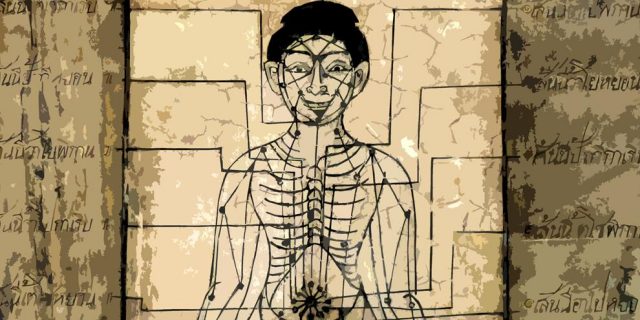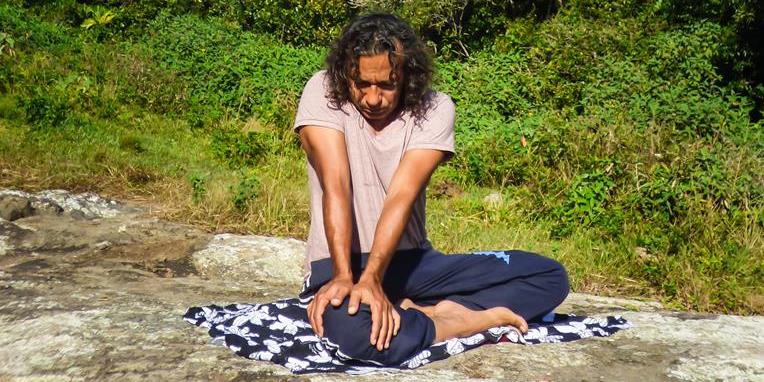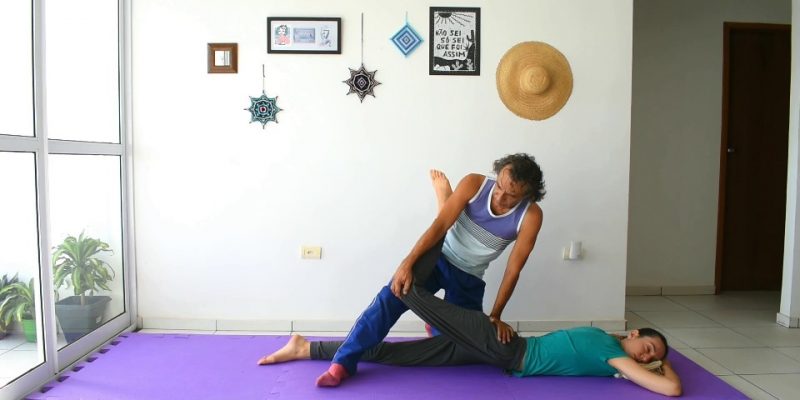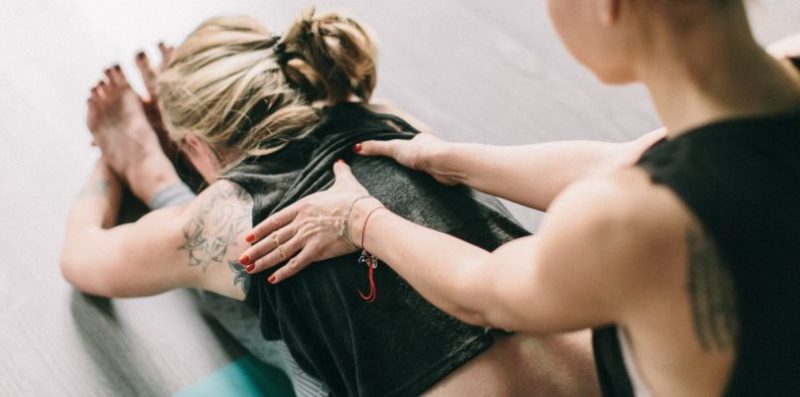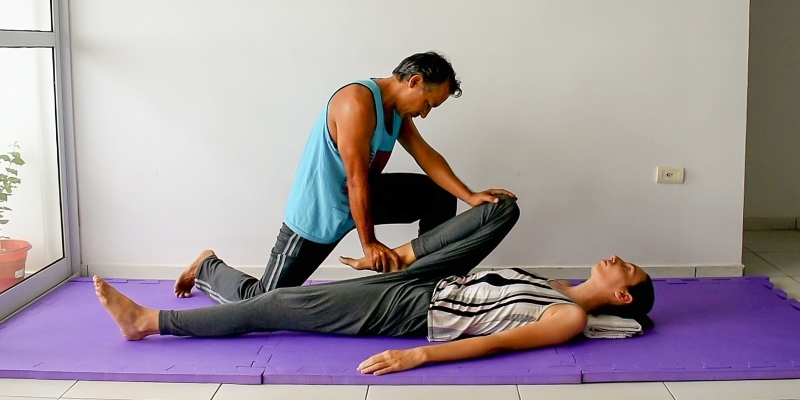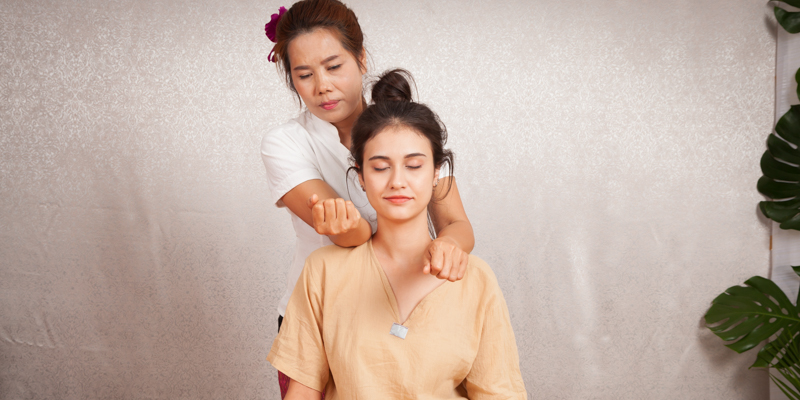
Thai Massage carried out with the receiver in the sitting position — on a mat on the floor — is rarely done as a complete massage, but generally makes part of a full body massage treatment that includes massaging the receiver in the prone, supine, and/or side lying position.

Depending on the Thai Massage lineage, some therapists are used to start a session with the client in the seated position, others — by contrast — end the session with it. Nevertheless, there are no specific rules to this. In fact, you may give a complete full body Thai Massage without the need of placing the client in the seated position, and only carry out the treatment in the prone, supine, and/or side position.
There are, however, some specific advantages to massaging in the seated position. For instance, you can perform quite a lot of different types of torso stretches i.e. spinal twists, and other stretches that address the chest, abdominal, and back muscles. Additionally, it’s an easy position to access the head, face, neck, shoulder blades, and trapezius shoulder muscles to massage those or perform stretches.
It’s also an ideal position to crack the spinal column i.e. realign the spinal vertebrae. In fact, quite some different techniques can be used here that involve pressure given with the knees or feet on the muscles along the spine in order to crack the spine.
When the receiver bends over in this position (either seated in the lotus position, with stretched legs, or on the knees), it’s also relatively easy to massage the back, although the prone position is obviously much better to do that.


